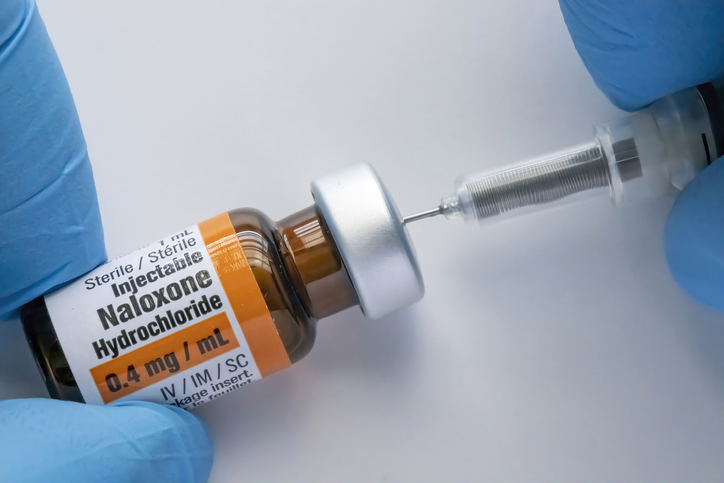Narcan Pharmacy Guide: Everything You Need To Know About Naloxone
Posted by Total Pharmacy Supply on Apr 24th 2023

Naloxone, more commonly known as Narcan, is an opiate antagonist medication used to treat opioid overdoses. It works by blocking the effects of opioids on the brain, including the sense of euphoria and respiratory depression that can occur with opioid use. Naloxone is a safe, straightforward treatment for overdose and can be administered in a variety of settings, including pharmacies. However, a recent study by the Journal of the American Pharmacists Association (JAPHA) found that while most states permit major naloxone dispensing roles for pharmacists, pharmacists are often underutilized without programs to support their roles. It's important for pharmacists to be aware of their role in the opioid epidemic and understand how they can help by equipping themselves with the information necessary to safely dispense naloxone.
How Does Naloxone Work?
Naloxone works by binding to the same receptors in the brain that opioids do, but it does not produce euphoria or respiratory depression. It only works if there are opioids present, so it’s important to remember that a person must have taken an opioid for naloxone to be effective. When administered, naloxone will begin to reverse the effects of the opioid within minutes.
Naloxone is a safe and straightforward treatment for overdose, but it’s important to remember that it only works temporarily, so if more opioids are taken after naloxone has been administered, then another dose may be necessary.
When To Administer Naloxone
Naloxone should be administered when someone is experiencing signs of an opioid overdose, such as snoring or gurgling, slow or shallow breathing, limp arms and legs, vomiting, and/or purple/blue lips. If the person is unconscious, it is important to follow the instructions on the package insert for administering Narcan appropriately. It should be noted that Narcan does not treat addiction, and repeat overdoses may occur if a person continues to use opioids.
How to Administer Naloxone
Naloxone can be administered in a variety of ways. The FDA-approved nasal spray is the most popular and accessible method, as it does not require any training or other supplies. Narcan can also be given via injection into muscle, veins, or under the skin.
It is important to seek medical attention immediately after administering Naloxone, as it only temporarily reverses the effects of opioids and does not address the underlying cause.
Potential Risks and Side Effects of Naloxone
Although naloxone is generally regarded as safe, there are some potential risks and side effects that pharmacists need to be aware of. These include drowsiness, confusion, nausea or vomiting, rapid heart rate, increased blood pressure, tremors, and seizures.
Pharmacists should also be aware of the possibility of “precipitated withdrawal”, which can occur when naloxone is administered to someone who has taken opioids regularly. This can cause rapid onset of the symptoms associated with opioid withdrawal, such as sweating and nausea.
Safety Considerations For Administration
It is important to take safety precautions when handling and administering Naloxone. Always wear protective equipment, such as gloves and goggles, to guard against exposure to used needles or any other body fluids. If a person is unconscious, it is recommended to use the Heimlich maneuver before administering Narcan.
How To Store Narcan At Your Pharmacy
It is important to store Narcan in a secure location, away from high temperatures, direct light, and moisture. The medication should be stored in its original packaging, preferably at room temperature. Be aware that the potency of Narcan may be diminished if not stored properly.
The U.S. Food and Drug Administration (FDA) recommends that all pharmacies have an opioid overdose reversal kit on hand in case of an emergency, including Narcan. The kit should include instructions for using the nasal spray and other necessary supplies.
How to Counsel Patients on Proper Usage
When counseling patients on the proper usage of naloxone, pharmacists should emphasize the importance of seeking medical attention after administering the medication. They should also caution that repeated overdoses may occur if a person continues to use opioids and encourage them to seek professional help for their addiction. In addition, pharmacists should emphasize the importance of proper storage and disposal of naloxone.
State-by-State Guidelines
Naloxone has been approved by the FDA for use as a rescue medication in cases of opioid overdose. However, each state has its own regulations for obtaining and administering Narcan, so pharmacists should be familiar with their local guidelines. In some states, pharmacists are allowed to dispense Narcan without a prescription from a doctor, while in other states, a prescription from a doctor is necessary. It is important to follow the regulations of your state.
For information about the guidelines in your state, check out the Safe Project State Rules Listing.
Further Resources
Pharmacists looking for additional information on naloxone can refer to the FDA website for up-to-date information on the medication or contact their State Pharmacy Board for additional resources. The Substance Abuse and Mental Health Services Administration (SAMHSA) also provides a variety of resources on opioid misuse, naloxone, and other related topics.
By understanding Narcan, pharmacists can help to ensure proper usage and storage of this medication, ultimately helping to save lives. Knowing the potential risks and side effects associated with naloxone, being aware of local guidelines for obtaining and administering Narcan, and having access to additional resources are all important steps in helping those suffering from opioid addiction.
